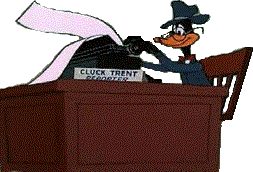On a cottage getaway this past summer, Professor Plonk, Captain Vino and I hit the board games pretty hard and had a lot of fun with the old classic Clue game. It’s not often, during this rather spectacular board game renaissance, that one gets caught up in an old game from the seventies, but some games need to be rediscovered, in this case, because I was a kid in the seventies and eighties and only played Clue on a shallow level at the time.
Clue is a logic game and the young beginner generally processes the logic puzzle as a simple process of elimination, throwing out 3 unknown pieces to the puzzle (room, weapon or suspect) on each possible occasion, plodding along until you’ve narrowed every category down to one possibility.
Playing as an adult, every game or two we discover new layers of logic available to examine and our strategies evolve until it’s possible to solve the puzzle very quickly. For instance, by declaring 2 ‘puzzle pieces,’ let’s say room and suspect, which you already have in your hand, it raises the stakes on the unconfirmed weapon card. It’s possible to nail the weapon early if no one can provide you with any feedback.
On the flip side, when you observe this scenario coming together for a competitor - I.e.: they suggest three clues which no one can rule out, you might infer that your competitor has just nailed a piece and you should record that combo in your notes so that once two of those clues are ruled out by you, you can assume the third piece of that combo is in the solution envelope. You can nail one of the clues without ever seeing that card and without ruling out it’s counterparts within the category.
There are other advanced bits of logic and strategy and further ways to play them off each other. This is all good!
The problem is that the original clue game is functionally suspect and lame by today’s standards.
Rolling dice for movement is strictly bogus by the standards of modern gamers. And when you combine that with the harsh imbalance in the manner rooms are mapped (specifically the secret door rooms) you get a huge imbalance which rewards the players for their luck with room cards and not their capacity for logic and strategy. This is further acerbated when you get players blocking doorways which is not a useful game dynamic in this particular environment. The game needs to be more about the logic and less about movement.
One less compelling complaint: The suspects/investigators (let’s call them characters from now on) have their own name and appearance but without any consequence at all.
So here’s how I’m updating Clue:
1. Lose the dice and the little movement squares. Each room is it’s own space, each one space away from it’s adjoining room(s). Like so:
My map still presents some quirks, with useful dynamics the way it meshes with movement rates. The doorways apply which makes the Hall the great facilitator and the kitchen and library of particular concern. Every room has a slightly unique relationship to the others thus the board’s inherent strategies are more subtle.
2. Different characters have different permanent movement rates, relating to their personalities; from 1 to 5 per turn. To balance that, different characters receive different numbers of bonus cards at the start. Professor Plum, for instance, is the slowest at 1 space movement per turn. On the other hand he gets 4 bonus cards at the start; more clues than anyone else. And to fine tune all these combinations, some characters have the clout to command that weapons be delivered to them at will and some don’t, and must collect them in person and bring them to their room of choice. Between these three dynamics we achieve diversity but equality between the nine characters. Oh yeah…
3. Because we have less inconsequential movement taking up time, and thus more frequent clue-calling, and because we need bonus cards, we need more cards and possibilities overall. Thus we have three new weapons: poison, piano wire and letter opener, and three new characters. I think you’ll know their names:
4, Depending on the number of players there will be some small number of revealed cards each game which all players can immediately cross off. This should appropriately moderate the added complexity (729 solution possibilities instead of 324 in the original game).
So with my version you get no die rolling or bumping into one another, more clue-gathering (every turn) and diverse personalities. This game should be more complex than the original, yet faster. I just need to test it now.








.jpg)



























No comments:
Post a Comment